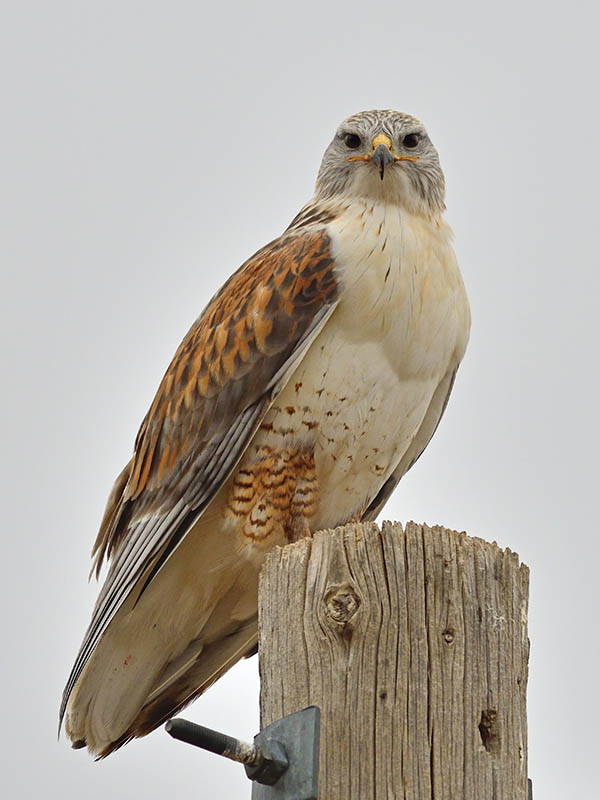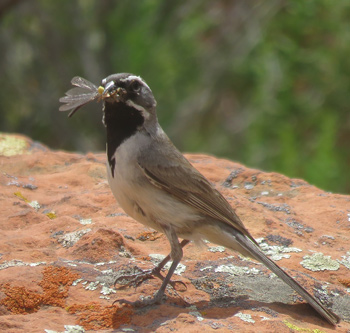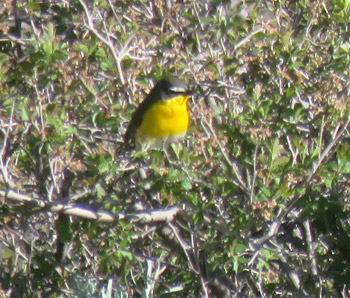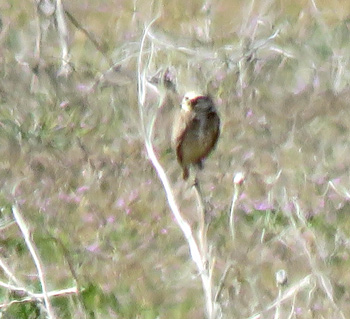Utah County Birders
Newsletter
|
|||||||||||||||||||||||||||||||||||||||||||||||||||||||||||||||||||||||||||||||||||||||||||||||||||||||||||
 |
Contents
Monthly Meeting
Upcoming Field Trips
Captain's Log
Bird of the Month
Field Trip Reports
Printable Version
Thursday, June 13th: Meet at the Walmart in Payson at 6:30 PM. We'll go to Warm Springs and bird. Hopefully get the American Bittern and a Short-eared Owl.
June 13th at 6:30 PM - To Warm Springs for the June meeting - see above
Other Filed Trips for June TBA
May 13th - Utah County Hot Spots trip for the club to prepare for the festival trip if anyone wants to go. It will be on May 13th 7-3. meet at Walmart parking lot NE Corner.
Friday, May 31st and Saturday, June 1st - WASHINGTON COUNTY
Lead by Suzi Holt. You will need your own accommodations.
We will meet at the McDonald's on Bluff Street Friday morning at 6 am to head out to Lytle Ranch. Bring a lunch. On the way back we will stop by Utah Hill to look for the Black-chinned Sparrow, then look for a Bell's Vireo and Common Blackhawk along the Sanra Clara River. We may go to Snow Canyon, Tonaquint Nature Park, Brooks Narure Park and Boits/Cox Park if time permits.
Saturday we will start out looking for Inca Doves in Hurticane, then head to Kolob Terrace. Meet at 7 am at the Wal-Mart in Hurricane in the SW corner of the parking lot. It is located east of the Sand Hollow turn off, along Hwy 9, 180 N 3400 W Hurricane
|
Utah County Birders
Captain’s Log - June 2019 by Keeli Marvel |
|
|
Hello my fellow birders! Great news for you - the
Common Nighthawks are back in town! I heard a couple cruising around over my
house as I was leaving for work yesterday. I'm super excited to report my TX trip was successful and I returned victorious with 3 new lifer. My husband (very much not a birder) was super patient with my efforts and let me drag him around the Gulf Coast on my search for lifers. I tried a couple of times during the week in the evenings after training to get a Barred Owl, without any luck. I did however get to watch fireflies come out in a park as it got dark one night and that was pretty magical. After my work training ended my husband flew in to spend the weekend with me and we took off for Corpus Christi for a night. We checked into a hotel on Padre Island and drove south about 20 minutes to Padre Island National Seashore where we started with a walk on the beach and I saw LEAST TERNS, BLACK SKIMMERS, SANDERLINGS, RUDDY TURNSTONE, WILLET, LAUGHING GULLS, BROWN PELICAN, ROYAL TERNS, and a CRESTED CARACARA who perched briefly on the beach and let us get a good look at him. No lifers yet, but a good start to the list. After that we drove around Bird Island Basin and I picked up my first lifer in the mudflats just before the camping area: A GULL-BILLED TERN! There were tons of birds in the mudflats on either side of the road, including DUNLIN, BLACK-BELLIED PLOVER, various SANDPIPERS (majority were SEMIPALMATED I believe), lots of BLUE-WINGED TEAL, a couple WILSON'S PHALAROPE, AMERICAN WHITE PELICAN, DOWITCHERS which I couldn't identify as short/long without a scope which I unfortunately did not have, and EASTERN MEADOWLARK singing on either side of the road (similar to ours but with a different call that sounds oddly haunting). |
|
|
|
|
| The
next morning I got up early and left my husband to sleep in while I drove
north on Padre Is. through Mustang Island State Park and up to the
Leonabelle Turnbull Birding Center in Port Aransas. On the drive up I got a
surprise APLOMADO FALCON perched along the powerlines next to the road. I
almost drove right past it, but thought wait a minute I should stop and turn
around and see what that was. Glad I did too! It's only the second or third
time I've seen an APLOMADO FALCON ever.
The Leonabelle Turnbull Birding center was hit pretty hard by Hurricane Harvey, but they've rebuilt a really nice little boardwalk with a birding tower that looks out over the marsh, and cleaned out a bunch of the debris in the area. In the trees next to the parking lot there were a MAGNOLIA WARBLER, a BLUE-HEADED VIREO, an EASTERN WOOD-PEWEE, and an empid species I didn't identify, but which I suspect was either an Acadian, Willow, or Alder Flycatcher. Out on the boardwalk I saw lots of STILT SANDPIPERS, SEMI-PALMATED SANDPIPERS, BLACK-BELLIED WHISTLING DUCKS and BLUE-WINGED TEAL. I spotted a couple ROSEATE SPOONBILL flying by in the distance and a SCISSOR-TAILED FLYCATCHER catching bugs along a fence line. Before leaving the boardwalk another birder pointed out a very large alligator swimming slowly away in the marsh. Apparently he'd gotten in a fight with a crab over a fish and the crab had actually won so the gator was swimming off to sulk. |
|
|
|
|
| In the mudflats on
the South side of the water treatment plant I combed through a bunch of
shorebirds to find a lifer WHITE-RUMPED SANDPIPER! Fortunately for me it was
feeding along the edge of the flats about 20 feet away from me so I got
great looks. Lifer #2 for the trip wooo! There were tons of other wading
birds including GREATER and LESSER YELLOWLEGS, DUNLIN, WILSON'S PHALAROPES,
COMMON GALLINULE, RUDDY TURNSTONE, WESTERN, LEAST, and SEMI-PALMATED
SANDPIPERS, STILTS, and DOWITCHERS.
After returning to the hotel and collecting my husband we stopped at the best little German Bakery on Padre Island for sweet and savory strudel (highly recommend if you’re in the area) and then we headed to the Rose Hill Cemetery in Corpus Christi for one last birding stop before heading back to San Antonio. Both times I’ve been to Rose Hill Cemetery have been in late April/first week in May and that seems to be the best time to visit. It’s always hopping with an amazing diversity of migrating warblers (and birders). This time around I was not disappointed. |
 Black-bellied Whistling Duck |
| The
first birds I saw were TENNESSEE AND BLACK-THROATED GREEN WARBLERS, followed
less than 5 min later by my lifer GOLDEN-WINGED WARBLER! Lifer #3 for the
trip! I was there just over an hour and also picked up MAGNOLIA WARBLER,
CHESTNUT-SIDED WARBLER, AMERICAN REDSTART, BLUE-WINGED WARBLER,
GREAT-CRESTED FLYCATCHER, ROSE-BREASTED GROSBEAK, BALTIMORE ORIOLE,
SWAINSON’S THRUSH, and COUCH’S KINGBIRDS. As we drove back to San Antonio I pointed out to my husband a flying CRESTED CARACARA and SCISSOR-TAILED FLYCATCHERS perched on the power lines along the highway. That concluded the Birding portion of our trip and left me satisfied with three new lifers. Hope everyone is surviving this wet spring and enjoying Birding the tail end of migration. I’m looking forward to a little summer heat at this point! Happy Birding! Keeli Marvel |
|
|
Birding Bloopers by Dennis Shirley Rather than keynote a bird for the month, or a group of birds, I thought it would be fun to mention some funny mispronunciations of birds. We’ve all witnessed the exciting moment when maybe we’re in a group of birders when suddenly a bird appears and in our anxiousness to spill out the identification, we make what might be called “birding bloopers.” It’s one thing to miss identify a bird, and we’ve all done that, but it’s another thing to mix up its name or pronunciation. One of the most classic examples we think of is the lazuli bunting. Is it pronounced “laz-u-lie” or la-zu-lee”? I’ve been told that if you are from the East, it is “lee” and if you are from the West, it’s “lie.” Of course, we think it’s “lie,” but who’s to say what’s correct? Another example might be, is it “Ploo-ver” or “Plov-er“ (lover)? These are really not the birding bloopers I am thinking about, but they are interesting anyway. Last night a neighbor came over to the house to sit and watch birds at our feeders as he often does. While we were watching the birds, he mentioned that he had had a “white-capped sparrow” at his feeder the day before. He was really excited because he had never had one in his yard and had never seen one before. I didn’t want to pop his balloon, because he’s an enthusiastic new birder who is excited about seeing anything, so I just let it go, knowing that he had really seen a “white-crowned sparrow” with it’s black and white striped head. This is really another kind of blooper, but again not the real funny kind.
A classic birding blooper happened at my DWR office several years ago before I retired. An older gentleman came inwho lived in the East and was on a birding trip to Utah. He had a target list of birds he wanted to see while here, and since everyone in the office knew my passion for birding, I was called down to the counter from my office. His target list included such species as a Red-naped Sapsucker, Lewis’ Woodpecker, and Pinyon Jay. After visiting with him for a few minutes and giving him directions as to where I thought he could find his target birds, I was about to leave when he emphatically stated that his number one bird he wanted to see in the West was a “Ferry-a-gynis Hawk.” It was everything I could do to not chuckle out loud, because I knew he really meant “Ferruginous Hawk.” I gave him some instructions as to where I knew a possible nesting pair might be, and then he left. That’s when I broke up and had a good laugh. My counter secretaries didn’t know what to think until I told them the correct name of the bird and that I thought a “Ferry-a-gynis Hawk” sounded more like a serious female disease. This was a common joke around the office for many weeks. Another birding blooper happened in Costa Rica on my first trip there with my sons Darren and Bryan many years ago. We were celebrating Darren’s graduation from medical school with a quick trip to Costa Rica. It was my first experience with birding outside the United States. Unlike Bryan and Darren, I had hardly cracked the field guide to the birds of Costa Rica. For me, it was a humbling birding trip because I didn’t even know what part of the field guide to open to find the bird I was trying to identify, and I swore at the time that it would never happen again, but that’s another story. One day as we were birding along a suspended canopy walkway from tower to tower, we ran into two women birders who appeared to me to be knowledgeable experts of the birds of the area. As we visited and asked them what they’d seen, one bird they were excited about seeing was the “Golden-browed Cornucopia.” Of course, being the novice I was, I had not a clue of what this bird looked like, but after we walked a short distance away, with me trying to #nd the bird in the field guide, Darren and Bryan started to chuckle and informed me that there was no such bird as a “Golden-browed Cornucopia.” They had mixed up the name. The bird was actually a bright green and yellow tanager relative called the “Golden-browed Chlorophonia.” (Wikipedia) Later that morning we were fortunate enough to see this beautiful little bird. To this day, I chuckle every time I see it because of the memory I have. Probably without exception, I could go on and tell a funny birding blooper for everyone in our club, certainly including myself. It’s just part of the fun we have and the game we play. |
||
|
|
||
|
|
||
|
31 May - 1 Jun 2019 Washington County
Field Trip
|
||
|
We had 7 Birders on Friday for
Lytle Ranch and 5 of us today for Kolob Terrace and Hurricane. But we had a
blast! We only missed a couple target species. |
||
|
We started off early in Lytle our hightlights were the Long-eared Owls! We also love seeing the Phainopepla, Brown-crested and Ash-throated Flycatcher, Black-tailed Gnatcatcher, Bell's Vireo! |
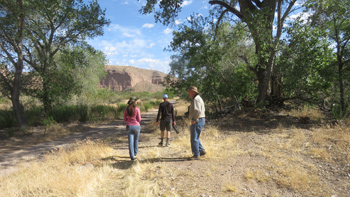 |
|
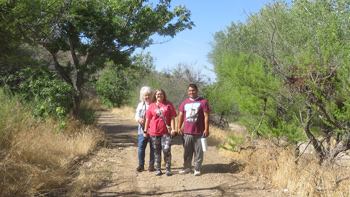 |
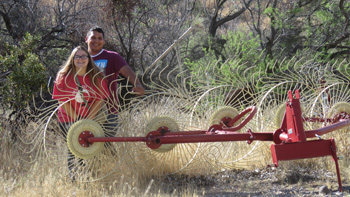 |
|
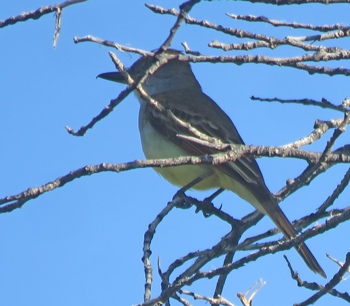 Brown-crested flycatcher |
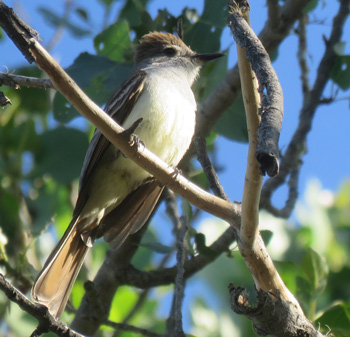 Ash-throated Flycatcher |
|
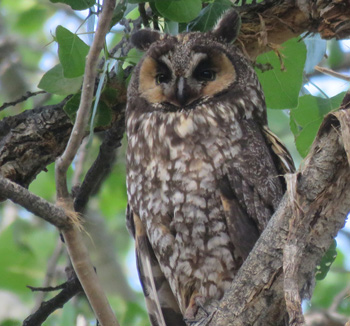 Long-eared Owl |
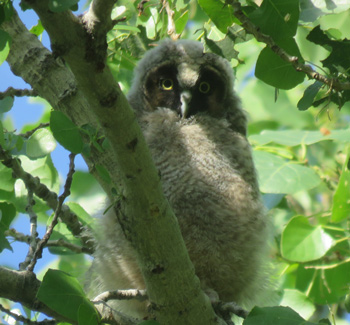 Long-eared Owl chick |
|
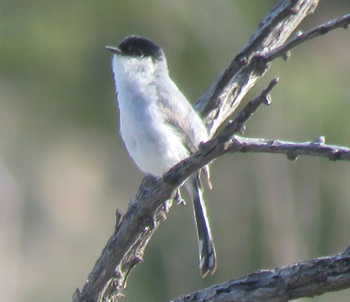 Black-tailed Gnatcatcher |
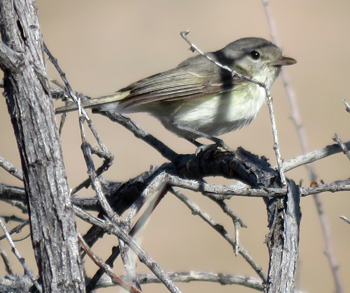 Bell's Vireo |
|
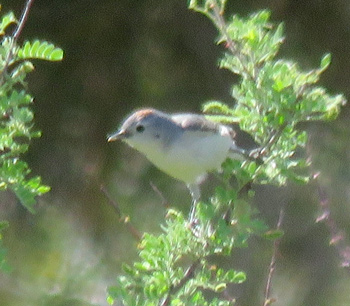 Lucy's Warbler |
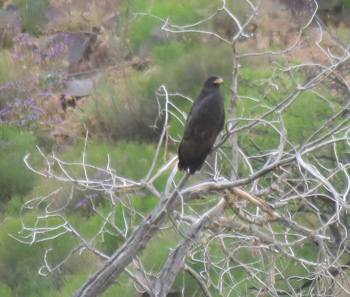 Common Black-Hawk |
|
|
In Snow canyon we got
Black-chinned, Black-throated and Rufous-crowned Sparrows. We did
a drive by to see the notorious Vermillion Flycatcher and they have
little ones! |
||
|
|
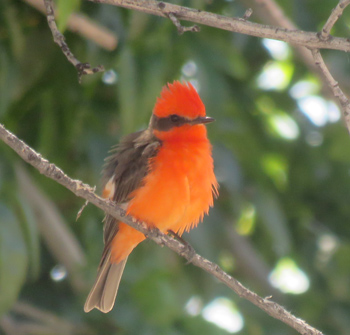 Vermilion Flyicatcher |
|
|
Saturday we met at 7 am and headed up Kolob Terrace. The Lava Point lookout had just opened up and we were able to see the California Condor from afar! We also saw the beautiful Grace's Warbler and enjoyed a Cordilleran Flycatcher. From there we went to Whispering Pines. We found a beautiful Red-naped Sapsucker and Mountain Bluebirds and a cooperative Dusky Flycatcher. |
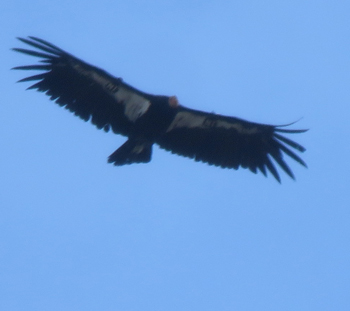 California Condor |
|
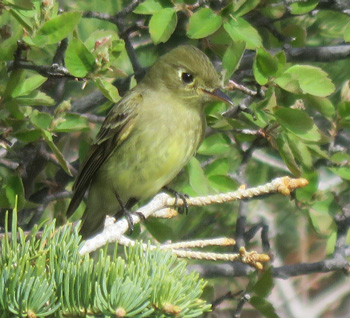 Cordilleran Flycatcher |
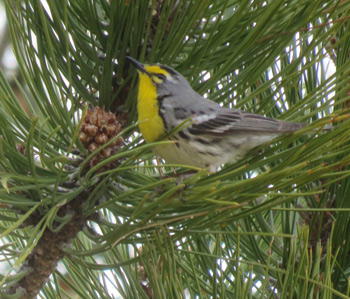 Grace's Warbler |
|
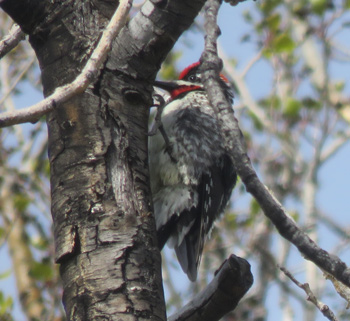 Red-naped Sapsucker |
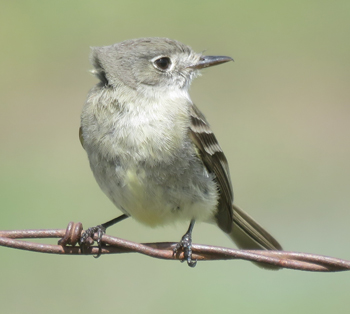 Dusky Flycatcher |
|
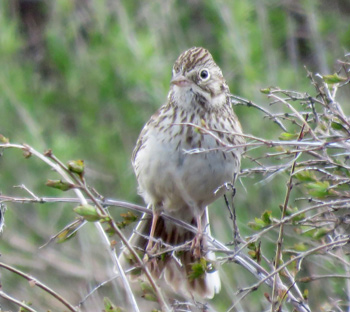 Vesper's Sparrow |
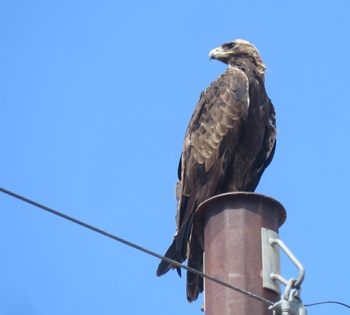 Golden Eagle |
|
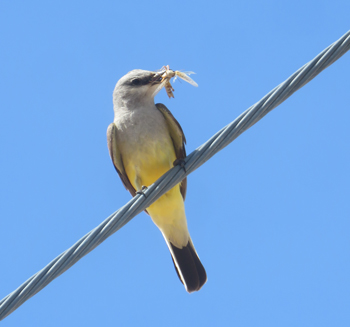 Western Kingbird |
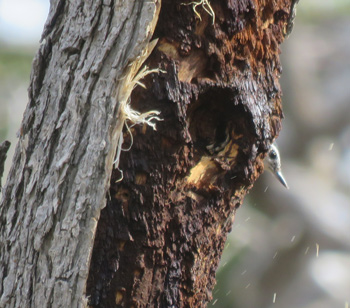 Red-breasted Nuthatch excavating her nest |
|
|
We went up to Kolob Reservoir and it is filled to overflowing with all the snow this year. But we were able to access the north end where we were happy to find the Lewis's and ACORN Woodpeckers. |
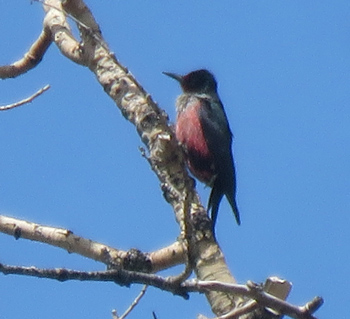 Lewis's Woodpecker |
|
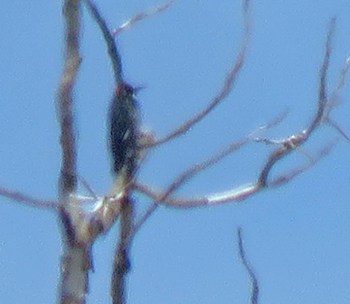 Acorn Woodpecker |
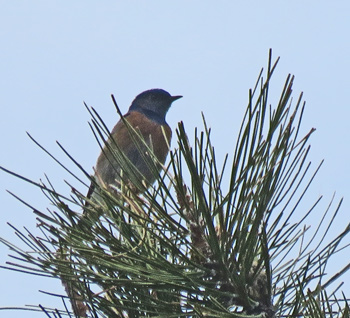 Western Bluebird |
|
|
After the reservoir we stopped at Wildcat Csnyon trail and hiked down to see the Pygmy Nuthatches...no Pygmy's, but we did find a White-breasted Nuthatch and Western Bluebird. We then stopped at Confluence Park and saw the great horned owl, Verdin and Summer Tanager. It was a beautiful 2 days down south and we missed everyone. We tallied 100 Species in those 2 days so it was a success!
|
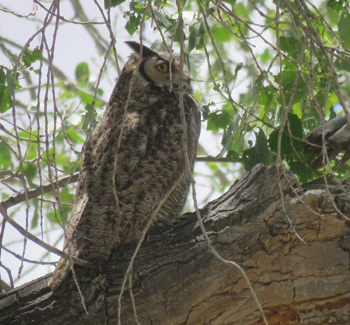 Great Horned Owl |
|
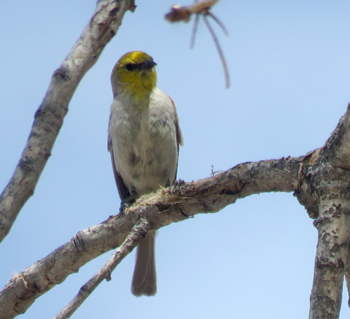 Verdin |
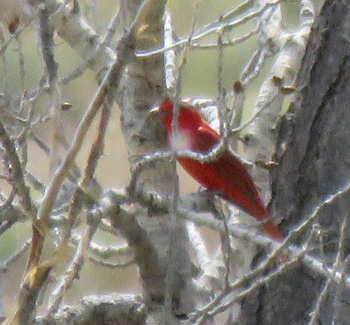 Summer Tanager |
|
|
Utah County Hotspots Field
Trip |
||
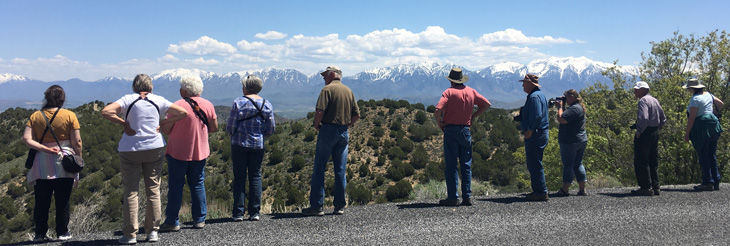 |
||
|
Birding the Tintics, looking toward the Wasatch
Mountain Range Photo by James Loveless |
||
|
Seventeen Utah County Birders met at Walmart at 7 am that is one hour before my usual wake up time :) We headed to Warm Springs WMA and got 27 species right of the bat. Highlights were the calling Long-eared Owl and the Common Yellowthroat. We also saw Canada Goose, Gadwall, Cinnamon Teal, California Quail, Ring-necked Pheasant, Mourning Doves, Broad-tailed Hummingbird, Virginia Rail, Sandhill Crane, a Willet putting on a great show, Great Blue Heron, Osprey, Swainson's Hawk, Red-tailed Hawk, Western Kingbird, Barn Swallow, Blue-gray Gnatcatcher, European Starling, Lesser Goldfinch, Yellow Warbler, Western Meadowlark, Bullock's Oriole, Red-winged Blackbird, Brown-headed Cowbird, Robin and House Sparrow, |
||
|
|
||
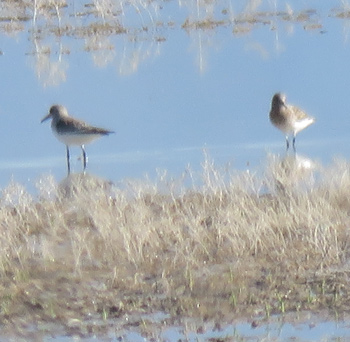 Sanderling & Peep |
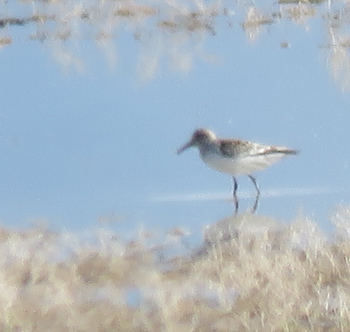 Sanderling |
|
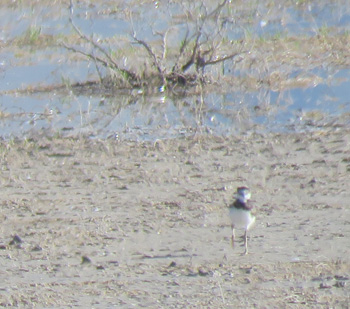 Baby Killdeer |
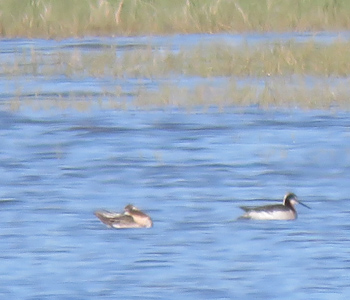 Wilson's Phalarope |
|
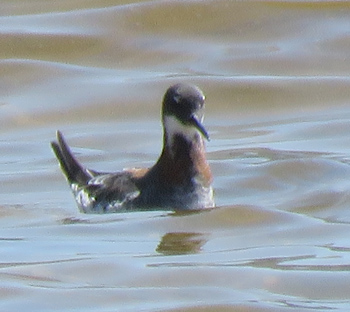 Red-necked Phalarope |
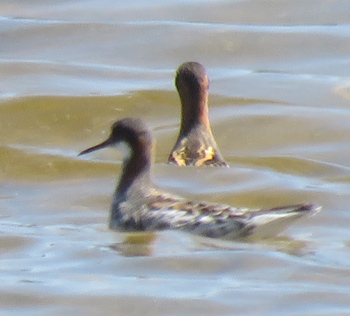 Red-necked Phalarope |
|
|
In Goshen Canyon there were 2 Golden Eagles, American Kestral,
Cliff Swallow, Northern Rough-winged Swallow, Barn Swallow, Black-billed
Magpie, Yellow-breasted Chat, Lazuli Bunting, Rock Wren, Song Sparrow,
Ring-billed and California Gulls. In the Elberta fields we saw
Lark Sparrow, Western Kingbird, Brewer's Blackbird, Red-winged Blackbird,
Eurasian Collared Dove, and Turkey Vultures. |
|
|
 Lazuli Bunting |
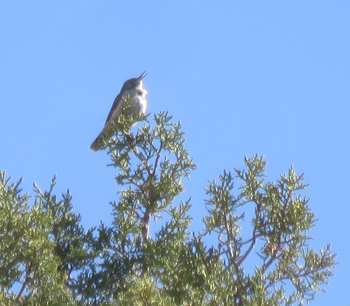 Rock Wren |
|
|
Our favorites were along the Elberta Slant Road. We saw "8" Burrowing Owls, "3" Gray Vireos, Say's Phoebe, Spotted Towhee, Chipping Sparrow, Broad-tailed Hummingbird, and Horned Lark. |
||
|
|
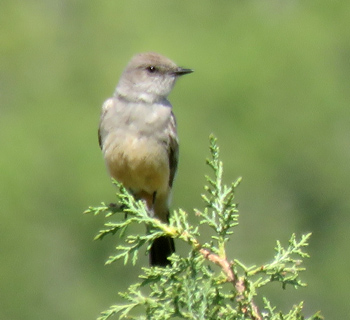 Say's Phoebe |
|
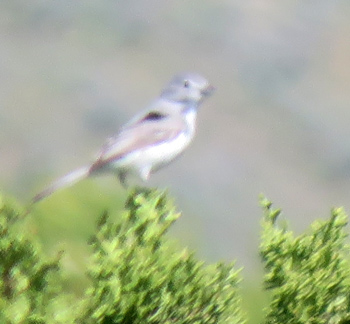 Gray Vireo |
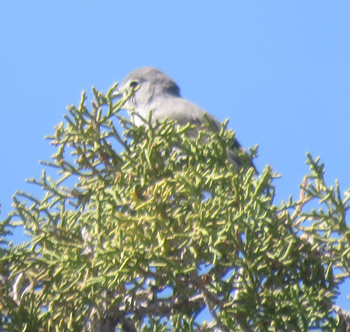 Gray Vireo |
|
|
In the Tintics around Eureka we saw Warbling Vireo, Virginia's Warbler, Green-tailed Towhee, Spotted Tpwhee, Bushtit, Black-throated Gray Warbler, Dusky Flycatcher, Gray Flycatcher, Orang-crowned Warbler, Yellow-rumped Warbler, Blue-gray Gnatcatcher, Mountain Bluebird, Juniper Titmouse, Western Tanager, Bewick's Wren, House Finch, and Rock Pigeon!!! Wow I think we hit 81 species with the unidentified peep! It was hot and I got sunburned but what a great day!!! Thanks to all who joined, it is so much fun to share such a fun passion!!!
|
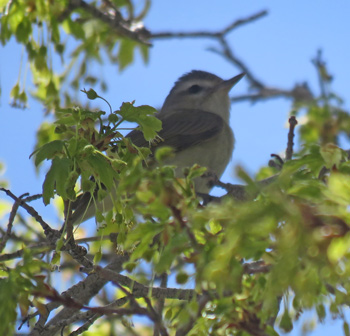 Warbling Vireo |
|
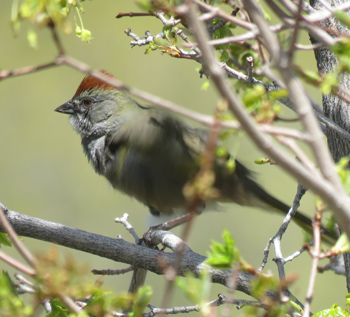 Green-tailed Towhee |
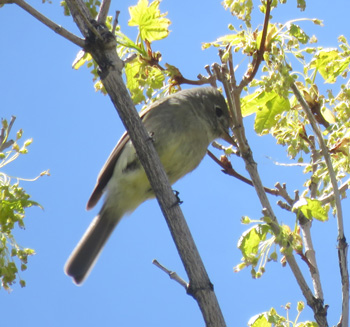 Dusky Flycatcher |
|
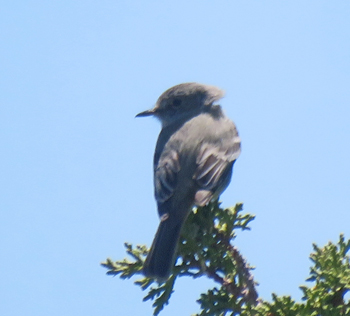 Gray Flycatcher |
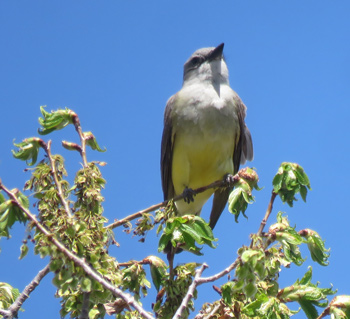 Western Kingbird |
|
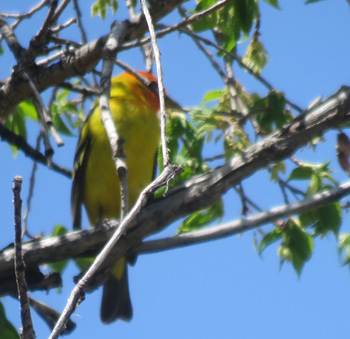 Western Tanager |
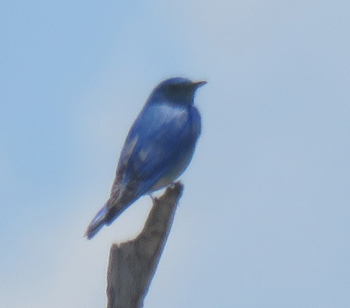 Mountain Bluebird |
|



